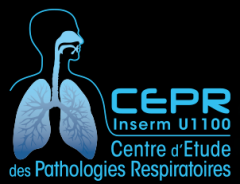Combination of β-(1, 3)-D-glucan testing in serum and qPCR in nasopharyngeal aspirate for facilitated diagnosis of Pneumocystis jirovecii pneumonia
Résumé
BACKGROUND: Currently, the biological diagnosis of Pneumocystis jirovecii pneumonia (PjP infection) usually relies on microbiological investigations in bronchial-alveolar lavage fluid (BALF) by conventional staining methods and/or molecular biology. However, bronchial-alveolar lavage is sometimes complicated to manage, especially in weakened patients. Therefore, alternative clinical samples-easier to collect-are warranted in such specific contexts.
OBJECTIVE: Over a four-year period, diagnostic performance of an original method based on combination of quantitative real-time polymerase chain reaction (qPCR) in nasopharyngeal aspirate (NPA) with measurement of β-(1, 3)-D-glucan antigen (BDG) in serum was prospectively assessed in a single centre.
PATIENTS/METHODS: Results were compared with those obtained in BALF through direct staining methods and qPCR. True positives were defined by an independent committee based on clinical, radiological and biological data. Overall, 48 individuals with a definitive diagnosis of PjP infection were included, and 48 controls were selected upon matching for age, sex and underlying disease(s).
RESULTS: qPCR results were strongly correlated between BALF and NPA (P < .0001). Altogether, greater diagnostic performance was achieved when establishing the positive cut-off of BDG antigen at 143 pg/mL. In such conditions, sensitivity of the testing based on either positive BDG measurement or positive qPCR in NPA was then calculated at 93.75%, 95% CI [82.37%-98.40%], and specificity at 97.87%, 95% CI [87.66%-100.00%].
CONCLUSIONS: Further validation through multicentre studies is now required, especially for establishing clear cut-offs. However, one could already state that combination of qPCR in the NPA with BDG measurement in serum may be a valuable substitute for BALF examination.
Origine : Fichiers produits par l'(les) auteur(s)
Loading...
